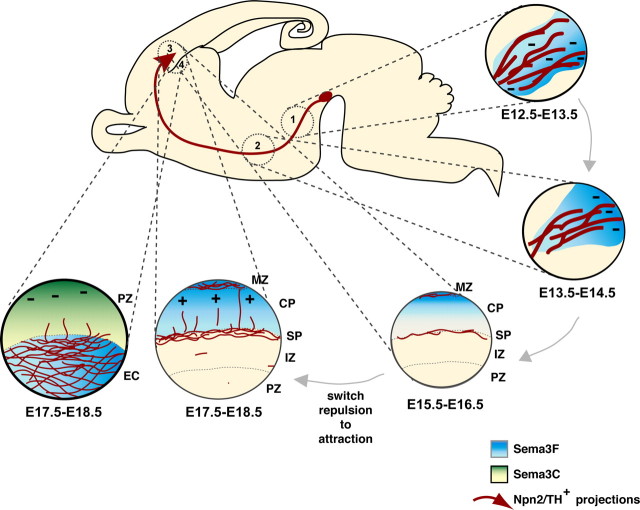Figure 10.
Proposed model for the role of Sema3F and Npn-2 during mesoprefrontal pathway development. (1) Surround repulsion by Sema3F expressed around the (presumptive) MFB trajectory (blue) induces channeling and fasciculation of mesoprefrontal axons (in red) in the MFB through Npn-2. (2) A temporally expanding high-caudal to low-rostral repulsive Sema3F gradient (blue) is required to push mesoprefrontal axons into a rostral direction in the forebrain. This effect does not require Npn-2. (3) Mesoprefrontal axons arrive in the SP around E15, and after a waiting period of ∼2 d innervate the overlaying CP. As they develop, mesoprefrontal axons change their responsiveness to Sema3F from repulsion to attraction. Attraction by Sema3F-Npn-2 is necessary to orient mesoprefrontal axons in the CP toward the pial surface. (4) A small subset of TH-labeled axons traverses the striatum and crosses the developing EC to innervate the overlaying mPFC. Access of axons to the mPFC via the EC is controlled by Npn-2 in combination with a repulsive ligand other than Sema3F, presumably Sema3C (green gradient), which is expressed in deeper cortical layers of the mPFC. IZ, Intermediate zone; MZ, marginal zone; PZ, proliferative zone.

